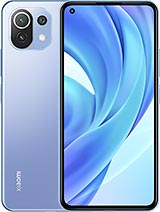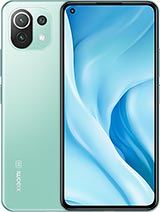Xiaomi Mi 11 Lite 5G Vs Xiaomi Mi 11 Lite 4G - What's the difference? By WhatGear
Welcome to what gear reviews you legendary people today, Xiaomi have been nice enough to send me over another me mystery box, but it's not a mystery to you guys. You already know what it is. The Xiaomi mi 11 lite. Now this phone is definitely not to be mistaken for the 11 night 5g. I do have that here, and I will show you side by side some differences and what I'm going to do in this. Video is unboxed.
This phone show you what this phone is all about, show you the differences versus the 5g variant, and there are some significant ones, and I'll give you my overall opinion on this phone, especially given the price. I've not actually seen this one yet, and I'm very interested to see it because they're actually calling the color Bob black, like Bob feet. So that's pretty cool, I'm interested to see what kind of finish that's going to be and, as you probably noticed, this is the 64 gigabyte, ROM version of the phone and there's one question that seems to pop up a lot when it comes to this phone, and it is, does it have an expandable memory card tray? Well we're about to find out you ready, let's go so when this me mystery box arrived. I did think it was going to be another me 11 light 5g, so I wrote this entire script about this phone versus the Redmi Note 10 pro versus the Poco f3, because these three phones are really closely contested, and I know there's a lot of you guys out there trying to decide which one of these is best for you, so I'm going to make that video anyway, so make sure you're, subscribed and turning your notifications when that goes live because that one's going to be fascinating. But what we're going to do here is get this one out of the box, compare it to the 5g version.
Let's go so! Okay! So now you've seen everything that comes with this phone in the box. Let's debunk one of the most common misconceptions about this phone, and it's to do with the sim card tray. So let's pop that open quickly. So, as you can see, we've got sim 1 on this side. If we turn this around you'll notice, we've got sim 2 and SD card, so this is in fact a hybrid sim tray, meaning you can have two sims or one sim and a SD card.
So if you need to expand the memory which you might well have to do with this phone, because it is only a 64 gigabyte, romp hone, so let's talk about the main notable difference between this and the 5g version when it comes to the design. It's the finish on the back. So this is the Bob black color and, as you can see, it's got a very reflective surface here and the black layer, underneath it kind of, looks like a metal finish almost, and it is pretty awesome, but it's also a fingerprint magnet and that might be annoying for some people. Now, when we compare this to the 5g version, which I believe might have the nicest finish on any phone in 2021, this is a frosted matte finish with a kind of two-tone glow to it. It really is one of the nicest you can get right now and there's a few different colors of this.
So even if you're not into 5g, you might want to consider getting this one just for the style points, and I'm just going to pop the sim tray here. So you guys can see if we have the exact same thing or not so again, we've got a sim one and then on the other side we have sim2 and SD card. So it is exactly the same on both devices. So when it comes to these two phones they're almost identical, but there are some differences. So when it comes to the dimensions they're exactly the same, they both got the amazingly thin 6.8 millimeter depth, but the 5g version is 2 grams heavier. But I don't think that's going to be the straw that breaks the camel's back on this one.
But it's worth noting and here's a bunch of similarities before we get into the main differences. Both phones have an ip53 rating, so it is splash proof they both have the exact same display a 6.5 inch AMOLED that supports HDR 10, plus with 800 nits of peak brightness. You've got 402 pixels per inch, which is very pixel dense. It's a full HD plus resolution, but the big deal here on both these phones is the 90 hertz refresh rate, that's 50 faster than the most expensive iPhone. You could buy right now.
They've both got dual speakers as well. So that's an awesome feature. They both have this really snappy very secure side mounted fingerprint reader, which is also the power button, and when we flip the phone around on the back, the shooters are exactly the same. We've got a 64 megapixel primary sensor. That's a Samsung sensor behind that one you've got an 8 megapixel ultra-wide and a 5 megapixel macro shooter.
But when we go back to the front cameras here is the first big difference. The selfie camera on the 5g version is a 20 megapixel shooter, with an f 2.2 aperture. Now, on the 4g version of this phone, we have a 16 megapixel, selfie shooter, which is still perfect, and it's an f 2.5 aperture and I don't know whether this is going to be important to you or not, but it is worth noting now. Neither of these phones have a 3.5 millimeter, headphone jack and that's definitely something. I do appreciate on the Redmi Note 10 pro, but Xiaomi are nice enough to throw in the USB to analog headphone jack dongle in the box.
Some say that this actually isn't quite as good as actually having a physical headphone jack. Let me know what you think about USB dongles in the comments below so now. Let's talk about one of the big differences between these two devices, so the 5g version of this phone has a better processor. It has Qualcomm snapdragon, 780 g, five nanometer chipsets. Now, if you're not familiar with what that is, the five nanometer chipset is basically one of the best most efficient chipsets you can get in the phone this year.
The regular light version doesn't have this chip. It has an eight nanometer chip. It is also a Qualcomm snapdragon. Furthermore, it's a 732 g, which is also very good and powerful enough for most consumers, and just so you guys can visualize the difference between these two without me, boring you to death with all the tech specs and everything here's the an tutu benchmark. So you can see the difference for yourself and when it comes to battery power, it's the same on both phones.
However, I did notice when I was taking the charger out of the box. It's actually a 27 watt charger with the regular light version, whereas you get a 33 watt charger with the 5g version. So of course your phone is going to charge a bit faster, but when it comes to battery sizes, they're both 4 250 William hours, so I had a quick look online and saw the price of this at 320 pounds. At the time of this video, the 5g version is actually 60 pounds more. You get a nicer finish on the back, you get 5g, and you get a more powerful processor and a better selfie snapper.
You have to decide whether that 60 quid is worth spending if you're, just looking for a phone, just a solid all-rounder with great rear cameras. Amazing screen amazing build quality, amazingly thin with dual sim tray and a SD card slot. Then this version of the phone could be the perfect match for you and, if you're leaning towards the 5g version of this phone, you might want to consider the Poco f3 and the Redmi Note 10 pro before you make that purchase decision and that's why I'm making a video to compare these three awesome smartphones from Xiaomi so that you guys can shop around and make sure you get the right phone for you. So I hope I've shed some light on the difference between these two versions of the same phone. If you've got some value out of this I'd appreciate a thumbs up and if you just subscribed you're now one of the finest subscribers known to man I'll see you guys in the next one don't be late.
Source : WhatGear





![Redmi K40 and Pro In-depth Review [English]](https://img.youtube.com/vi/jcwPOat9ncs/maxresdefault.jpg )




















